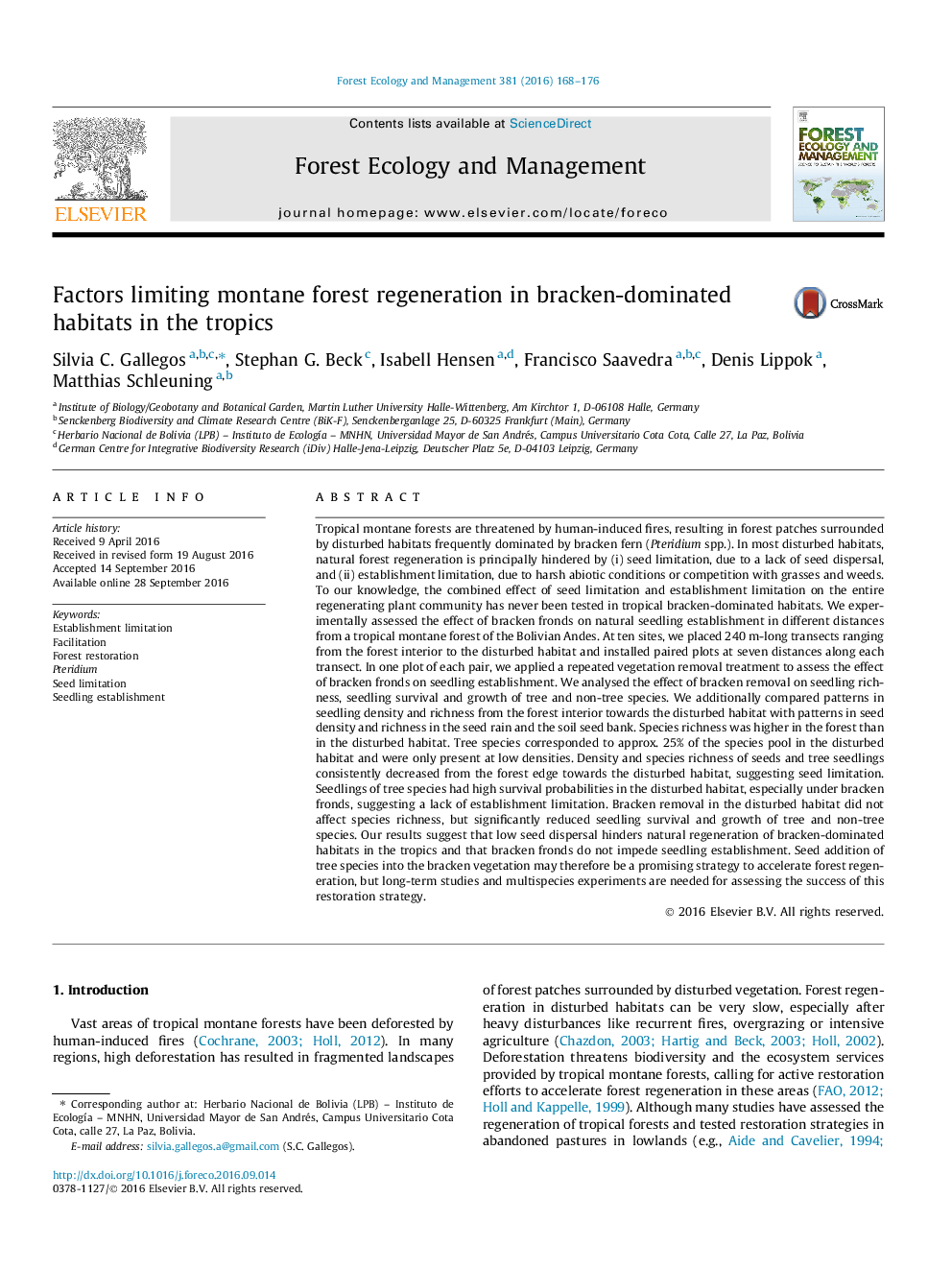| کد مقاله | کد نشریه | سال انتشار | مقاله انگلیسی | نسخه تمام متن |
|---|---|---|---|---|
| 6459557 | 1421377 | 2016 | 9 صفحه PDF | دانلود رایگان |
- Tropical bracken-dominated habitats are seed limited rather than establishment limited.
- Low seed dispersal hinders forest regeneration of tropical bracken-dominated habitats.
- Bracken fronds do not reduce seedling survival and growth of tree species.
- Bracken could facilitate seedling recruitment in disturbed habitats.
Tropical montane forests are threatened by human-induced fires, resulting in forest patches surrounded by disturbed habitats frequently dominated by bracken fern (Pteridium spp.). In most disturbed habitats, natural forest regeneration is principally hindered by (i) seed limitation, due to a lack of seed dispersal, and (ii) establishment limitation, due to harsh abiotic conditions or competition with grasses and weeds. To our knowledge, the combined effect of seed limitation and establishment limitation on the entire regenerating plant community has never been tested in tropical bracken-dominated habitats. We experimentally assessed the effect of bracken fronds on natural seedling establishment in different distances from a tropical montane forest of the Bolivian Andes. At ten sites, we placed 240Â m-long transects ranging from the forest interior to the disturbed habitat and installed paired plots at seven distances along each transect. In one plot of each pair, we applied a repeated vegetation removal treatment to assess the effect of bracken fronds on seedling establishment. We analysed the effect of bracken removal on seedling richness, seedling survival and growth of tree and non-tree species. We additionally compared patterns in seedling density and richness from the forest interior towards the disturbed habitat with patterns in seed density and richness in the seed rain and the soil seed bank. Species richness was higher in the forest than in the disturbed habitat. Tree species corresponded to approx. 25% of the species pool in the disturbed habitat and were only present at low densities. Density and species richness of seeds and tree seedlings consistently decreased from the forest edge towards the disturbed habitat, suggesting seed limitation. Seedlings of tree species had high survival probabilities in the disturbed habitat, especially under bracken fronds, suggesting a lack of establishment limitation. Bracken removal in the disturbed habitat did not affect species richness, but significantly reduced seedling survival and growth of tree and non-tree species. Our results suggest that low seed dispersal hinders natural regeneration of bracken-dominated habitats in the tropics and that bracken fronds do not impede seedling establishment. Seed addition of tree species into the bracken vegetation may therefore be a promising strategy to accelerate forest regeneration, but long-term studies and multispecies experiments are needed for assessing the success of this restoration strategy.
Journal: Forest Ecology and Management - Volume 381, 1 December 2016, Pages 168-176
